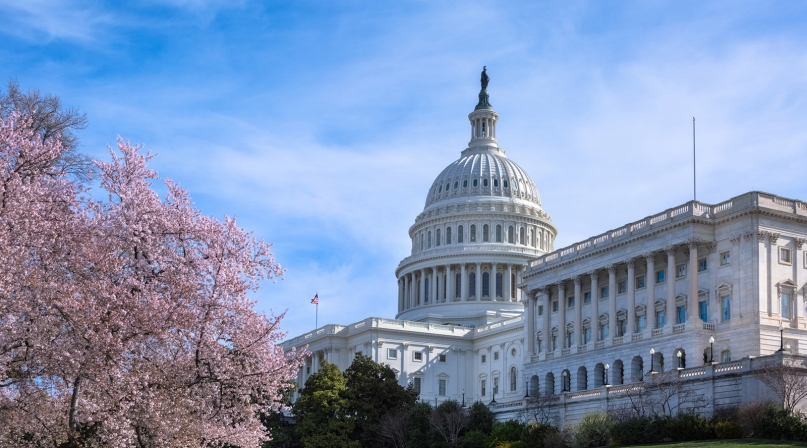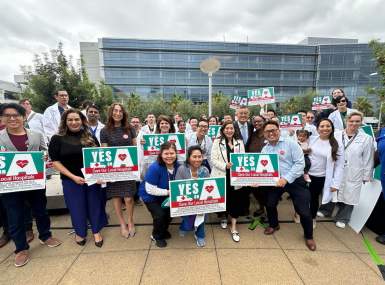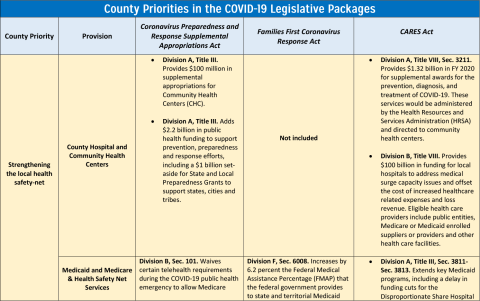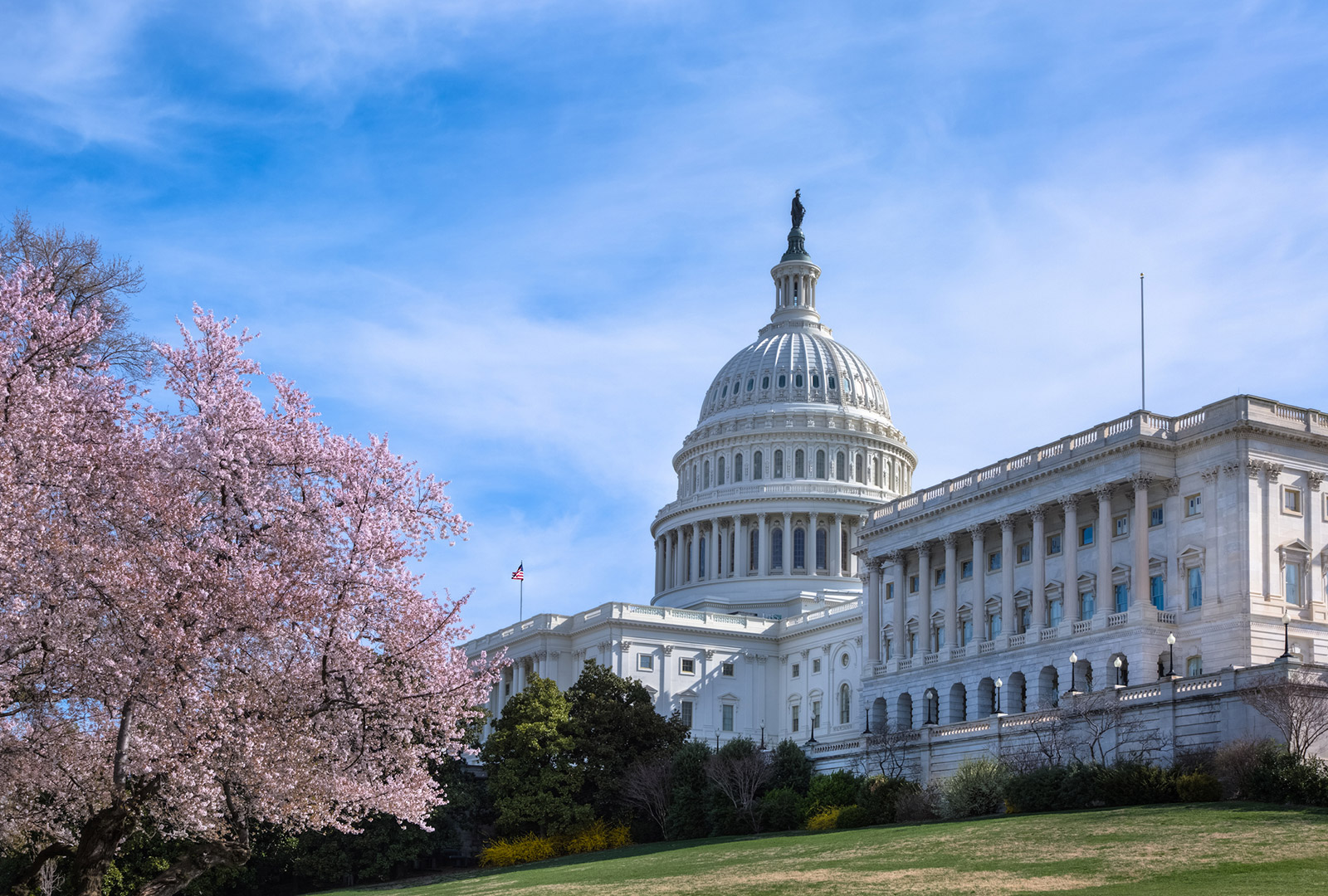Congress completes third COVID-19 legislative package containing key county priorities
Author

Blaire Bryant
Upcoming Events
Related News

Key Takeaways
Over the course of just a few weeks, Congress and the Trump Administration have made swift progress on legislation to address the COVID-19 pandemic, with three sweeping legislative packages signed into law in March alone.
On March 27, Congress passed and the president signed the third and largest of these bills, the Coronavirus Relief and Economic Security (CARES) Act (P.L. 116-136). Totaling $2 trillion, the bill represents the largest rescue package in U.S. history and contains provisions across multiple federal agencies and programs that would support county priorities around health, human services, emergency preparedness and workforce development, among other issue areas.
Of major importance to counties, the CARES Act establishes a new Coronavirus Relief Fund for state and local governments to address budgetary shortfalls related to the coronavirus pandemic. The bill provides $150 billion in aid to states, tribal governments, territories and local governments with populations of over 500,000 people to address necessary expenditures incurred due to the COVID-19 public health emergency.
Passage of the CARES Act follows enactment of the Coronavirus Preparedness and Response Supplemental Appropriations Act (P.L. 116-123) and the Families First Coronavirus Response Act (FFCRA; ), which provided a combined $11.7 billion in funding for public health programs, testing, unemployment benefits and other federal supports to combat the pandemic.
A comparison chart of county highlights in each package can be found at this link.
Going forward, Congress is expected to take up yet another legislative package in the coming weeks, known as “phase four” of the federal response to the COVID-19 pandemic. The next proposal is expected to build on the economic measures outlined in the previous legislative packages to sustain communities, employers and major industries as the pandemic continues. Legislators could move on these new proposals once returning from recess at the end of April.
NACo is working closely with our federal partners to secure county priorities in any future legislative proposals, as well as to clarify certain provisions in each of the previous three legislative packages.
For more NACo resources on COVID-19, please see the following links:
- COVID-19: County Response Efforts and Priorities (NACo comprehensive resource landing page)
- Analysis of the Third COVID-19 Emergency Supplemental: The Coronavirus Aid, Relief and Economic Security Act (NACo legislative analysis)
- Congress and White House pass second COVID-19 legislative packages, looks to a third (NACo blog)
- Federal COVID-19 Response Highlights for Counties (NACo legislative analysis)
- Letter to Congressional Leadership on Coronavirus Pandemic (NACo letter to Capitol Hill)
- Congress, president move quickly on emergency aid to combat coronavirus (NACo blog)
Attachments
Related News

CMS issues new guidance on Medicaid Community Engagement Requirements
On December 8, the Centers for Medicare & Medicaid Services (CMS) released a Medicaid and CHIP Services Informational Bulletin (CIB) directing states on how to implement the Medicaid community engagement requirements enacted under Section 71119 of the One Big Beautiful Bill Act legislation (Public Law 119-21), or H.R. 1.

California county sales tax measure backfills federal healthcare cuts
Santa Clara County, Calif. will raise an estimated $330 million each year from a sales tax to backfill lose Medicaid funding.


